Make Your Workplace More Accessible To Employees With Autism
According to Autism Europe, there are around 7 million people with autism in the EU.
In order to draw attention to the urgent needs of people with autism around the world, the United Nations General Assembly declared 2 April the World Autism Awareness Day.
Studies have shown that between 76% – 90% of adults with autism are unemployed.
Although autism affects a person’s ability to interact with the people around them, autistic persons display innate abilities and skills. Attention to detail, enjoying repetitive tasks, lack of tolerance for errors, persistence and loyalty are some of these skills. Businesses could employ persons with autism to work on tasks such as software testing, programming and data-entry. Unfortunately, such opportunities for high-quality work have gone to waste due to autistic people’s high rate of unemployment.
The mission of Autism Europe and other organizations is to drive change by creating innovative employment opportunities for people with autism.

MyAccessHub is a platform designed to help businesses make their workplaces more accessible and more inclusive to autistic employees.
myAccessHub was co-founded by Gearoid Kearney and Miriam O’Sullivan.
Mr Kearney developed alvrCloud and is currently working on the 360 VR & Animation Content for the Programme.
Mrs O’Sullivan has over 10 years of experience working with children and adults with autism; she has recently completed her Masters in Autism and Technology.
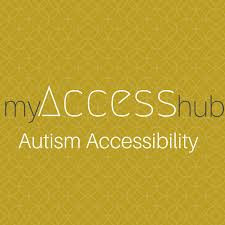
image: myAccessHub on Facebook.com
The platform’s offer includes the following services:
- The Virtual Reality Experience immerses employees in scenarios that educate them on how small things within their workplace can have a huge impact on employees who have Autism and other Neurodiversities;
- The alvrCloud eLearning Platform educates all the employees within a business on the subject of Neurodiversity starting with Autism Awareness & Equality;
- The Onsite Training programme provides training onsite in Autism Awareness & Equality to the managers within a business.
myAccessHub from alvrCloud on Vimeo.
The 2018 National Startup Awards
myAccessHub is the Gold winner of the Social/Sustainable category at the 2018 National Startup Awards (Ireland).
Join the Conversation
We’d love to hear what you have to say.
Get in touch with us on Facebook Group and Twitter.
LinkedIn Report: 4 Trends Transforming The Workplace in 2019
LinkedIn, the 600 million users social network has released its 2019 Global Talent Trends Report. The report highlights four trends transforming the workplace in 2019.
The researchers have surveyed over 5000 talent professionals in 35 countries interviewing company leaders, speaking with experts, and observing activity on the LinkedIn platform.
Here are 4 trends which are set to transform and shape the workplace in 2019:
- Soft skills;
- Work flexibility;
- Anti-harassment;
- Pay transparency.
1. Soft Skills
A.I. may be able to write news articles and making movie trailers, but they cannot display soft skills.
Creativity, persuasion, collaboration, adaptability and time management are valuable soft skills employers actively look for when searching for new hires.
80% of surveyed employers say soft skills are increasingly important to company success. The challenge that companies are struggling to overcome is the process by which to identify the aforementioned soft-skills. According to this report, 57% of employers struggle to assess soft skills accurately.
LinkedIn: 6 tips to help your company assess your candidates’ soft skills
1.Determine the soft skills valued most at your company by taking the following steps:
- interview your company’s leaders;
- identify the skills shared by your top performers;
- consider the skills your company needs to take on future challenges.
2. Identify and define the skills needed for a given job.
3. Consider online tools to prescreen candidates – these tools assess their soft skills systematically and with less bias (ideally).
4. Be mindful that bias can creep in.
5. Standardize your interview questions.
6. Ask problem-solving questions to see soft skills in action.
A case study on hiring for soft skills and hard skills

Citi, the Wall Street firm is not hiring for technical skills alone.
The company uses problem-solving case studies and group exercises to showcase candidates’ collaboration, communication, and leadership skills.

2. Work Flexibility
Between 2013 and 2017 candidates’ request for flexible workplaces has increased from 25% to 31%.
Since 2016 the number of job posts on LinkedIn which mention flexibility rose to over 78%.
The ability to work from any place outside the office has been driven by technology and required by an increasing number of employees who are looking to improve their work-balance life and be more involved with their family.
Here are the top benefits of work flexibility as mentioned by talent professionals:
- Improves employee work-life balance – 77%;
- Encourages retention – 54%;
- Attracts candidates – 51%;
- Increases productivity – 42%;
- Expands available talent pool – 38%.
Women candidates are more inclined to look for flexibility when considering a job offer.
The LinkedIn report found that 36% of women and 29% of men say flexible work arrangements are very important when considering a job.
PwC has identified five megatrends which will influence the world and shape the business environment of 2019.
One of these trends is the demographic and social change that is driven by the ageing population which is the fastest growing segment today. The ageing population brings disruption to the traditional life cycle of education, work and employment and increased costs on healthcare.
The solution to this situation lies in the business environment.
To succeed and thrive, businesses need to harness the power of older workers and women. Businesses catering to women’s needs will see increased productivity and reduced turnover.
Discover 4 flexible work strategies in our article:
Employees Stress – Causes, Business Costs and What To Do To Prevent It
A flexible workplace is also known to bring difficulties in collaboration and bonding. Have no fear, technology comes to the rescue! There are many tech solutions to overcome remote work challenges like instant messaging platforms, collaboration tools, audio and video conferencing etc.
LinkedIn: 6 steps to building a flexible work culture
- Know what types of flexibility your employees want;
- Optimize your office space for a semi-remote workforce;
- Help employees connect through technology;
- Promote your flexibility policy in job descriptions, candidate interviews, and employee meetings;
- Train leaders to manage flexible workers;
- Tailor your flexibility policies to fit local cultural contexts, needs, and goals.
A case study in work flexibility
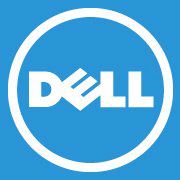
Nearly 60% of Dell employees work flexibly. Dell’s flexible program has saved the tech giant an average of $12 million annually since 2014 due to reduced office space requirements.

3. Anti-Harassment
The #metoo movement spread like wildfire across the globe in 2017. The first spark was ignited by the high-profile harassment cases in the US entertainment industry. Over a short period of time, harassment cases voiced by women encompassed the business environment across multiple industries.
One may believe that companies didn’t have anti-harassment policies before the #metoo movement. They had only they didn’t prevent unacceptable behaviours from happening; the company culture was such that harassment and assault cases went unreported to management. Harassment victims didn’t believe they would be heard or that management would take any actions towards their assailants.
LinkedIn found that workplace harassment content shared on its platform increased by 71% year on year.
Employers are seeing anti-harassment as a business necessity, not just a legal and moral one. Hostile workplaces hurt the bottom line through lost productivity and turnover, while respectful ones attract talent and improve engagement.LinkedIn, The 2019 Global Talent Trends Report
75% of the talent professionals surveyed by LinkedIn said they had noticed the following behavioural changes among employees over the last two years:
- Speaking up more when uncomfortable;
- Discussing social issues more openly;
- Calling out bad behaviour more;
- Telling fewer insensitive jokes;
- Willing to listen more.
Here are the most effective anti-harassment tactics as mentioned by the surveyed professionals:
- Promote ways to safely report;
- Establish a zero-tolerance policy;
- Add more ways to safely report;
- Hold training sessions;
- Increase gender diversity of leadership;
- Add or improve policies.
LinkedIn: 4 steps to help combat harassment
- First, understand where you are before you can see what needs to change: review your existing policy, understand what your employees want, rethink well-intentioned practices that can backfire, get buy-in from the top.
- Give your policy a refresh: tell people exactly how you handle harassment claims, give employees multiple ways to report, define good behaviour, too, adapt your policy to local needs;
- Train and communicate: focus on the grey areas, make it interactive and personal, be inclusive of all victims, complement customized training with external resources, empower employees to step in when they witness an offence, not just when they’re a target.
- Respond and follow up: help victims feel safe from the start, tailor the response to the severity of the offence, respond to inappropriate behaviour publicly and with real consequences, reach out to victims even after your legal obligation is fulfilled.
A case study on anti-harassment
Last year 20.000 Google employees left their offices in New York City, Dublin, Berlin, Singapore and other cities around the world to protest against the company’s handling of sexual misconduct and inequality. Google walkouts forced the big company to review its harassment and transparency policies.
In an email sent to employees, Google CEO Sundar Pichai acknowledged previous shortcomings and laid out a plan to make changes:
We recognize that we have not always gotten everything right in the past and we are sincerely sorry for that. It’s clear we need to make some changes.
Going forward, we will provide more transparency on how we handle concerns. We’ll give better support and care to the people who raise them. And we will double down on our commitment to be a representative, equitable, and respectful workplace.Sundar Pichai
4. Pay Transparency
For years, employers refrained from disclosing too much information about employee salaries. They feared a transparent process would cause wage disputes, limit their ability to negotiate, and encourage competitors to poach talent. Salaries were kept a secret under the thick blanket of confidentiality.
The problem is when people don’t have enough information, they tend to fill in the blanks with negative assumptions.
A 2017 report conducted by PayScale showed that 61% of surveyed employees believed they were underpaid compared to other colleagues.
If employers are looking to attract the best and the brightest, they should include pay transparency in their hiring strategies.
Searching for conversations focused on pay transparency, LinkedIn found that the content shared by its users on this particular topic has increased by 136% since 2014.
But not all employers are ready to shift gears so quickly. As reported by talent professionals, 27% of companies share salary ranges, 22% don’t share but are likely to start and 51% don’t share and are unlikely to start.
Benefits of sharing salary ranges as highlighted by LinkedIn in its report:
- Streamlines negotiation;
- Ensures fair pay;
- Filters out those who’d decline;
- Allows interview to focus on other things.
LinkedIn: 7 steps to establish pay transparency
- Conduct an internal audit to see how your pay compares to competitors and whether you have any major pay gaps across gender, race, and those in similar roles;
- Decide how transparent you want to be;
- Solicit employee input;
- Develop clear compensation criteria;
- Train managers to discuss pay appropriately;
- Take it one step at a time;
- Communicate clearly as you roll out the policy.
A case study on pay transparency
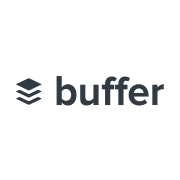
Buffer began sharing salaries publicly online in 2013. The company uses a salary formula which meets the transparency criteria for each of its employees. The formula determines every employee’s pay based on their experience, local cost-of-living, and the market rate of the role. Buffer employees are happy with the company’s pay transparency strategy because it ensures they receive equal pay for equal work. They also feel valued and respected when they know they are being paid fairly.
Join the Conversation
We’d love to hear what you have to say.
Get in touch with us on Facebook Group and Twitter.
The Future of Workplace is Not the Open Plan Office
In early 2000s the open plan workplace was the first choice all large companies with hundreds of employees jumped to.
Latest research and statistics have shown that although it seemed to be a good idea at the time, open plan offices are now proved to be toxic for your employees and bad for business.

image source: k2space.co.uk
The open-plan offices are bad for your employees and your business
Here are the statistics supporting this conclusion:
- Open plan offices don’t boost interaction and collaboration between employees as imagined: there is 73% less time in face-to-face interactions while email and messaging use shoots up by over 67% (inc.com);
- Businesses register low productivity due to the ambient noise present in office environments, employees suffer greater instances of conflict, higher blood pressure and a larger number of sick days (europeanceo.com);
- Employees’ ability to focus and concentrate on their work is compromised, losing a total of 86 minutes every day to distractions (europeanceo.com) which leads to inefficiency and mistakes.
The open-plan offices generate increased business costs due to decreased productivity of disengaged and unhappy employees.
The open plan offices are the past. What’s the future of workplace?
Designers and workplace strategists have four new and better-suited work environments for businesses and large companies to help them move beyond the open plan offices.
Here they are via Work Design Magazine.com:
- Activity-Based Workplaces (ABW)
- Neighbourhood-based Choice Environments (NCE)
- Maker Environments, Mobile Occupants (MEMO)
- Immersive Environments
Activity-Based Workplace

image source: officesnapshots.com
This office concept creates task-oriented solutions that encourage movement and empower people to select the right space for the job at hand.
ABW environments are typically designed to be an ecosystem of spaces, primarily grouped to serve four major work functions: solo work, collaboration, learning, socializing and rejuvenation.
Neighbourhood-Based Choice Environments
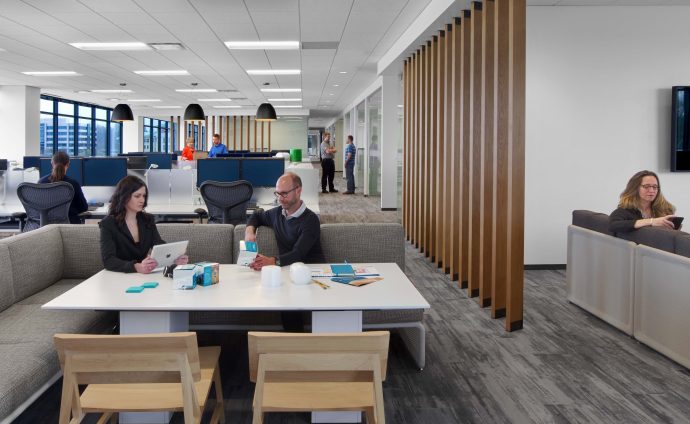
image source: workdesign.com
These spaces create a neighbourhood or home for teams to operate out of while still allowing people to have access to a variety of work settings. Having a team base where employees can connect and have a sense of belonging and identity is important to all.
NCE spaces create a sense of community and place that meets our territorial instincts. These environments enable people to connect by providing them with a variety of preferences while meeting the needs of the business and the individual.
Maker Environments, Mobile Occupants
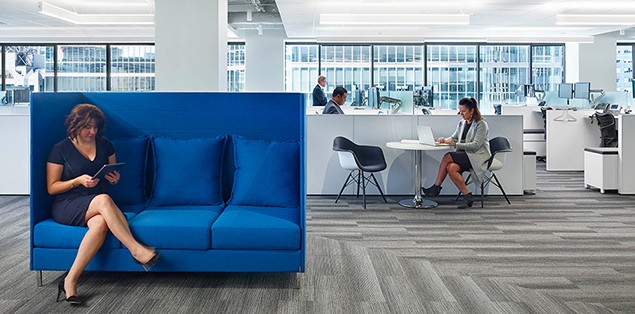
image source: hok.com
MEMO spaces are emerging for companies that are looking to create innovative spaces that foster creativity and speed to innovation. Simply put, it’s the “garage-ification” of space for programmers, creatives, or co-workers where space takes on a scrum or maker feel.
These spaces are emerging in sectors where rapid development is key. In Asia they are often referred to as “agile program space”.
Immersive Environments
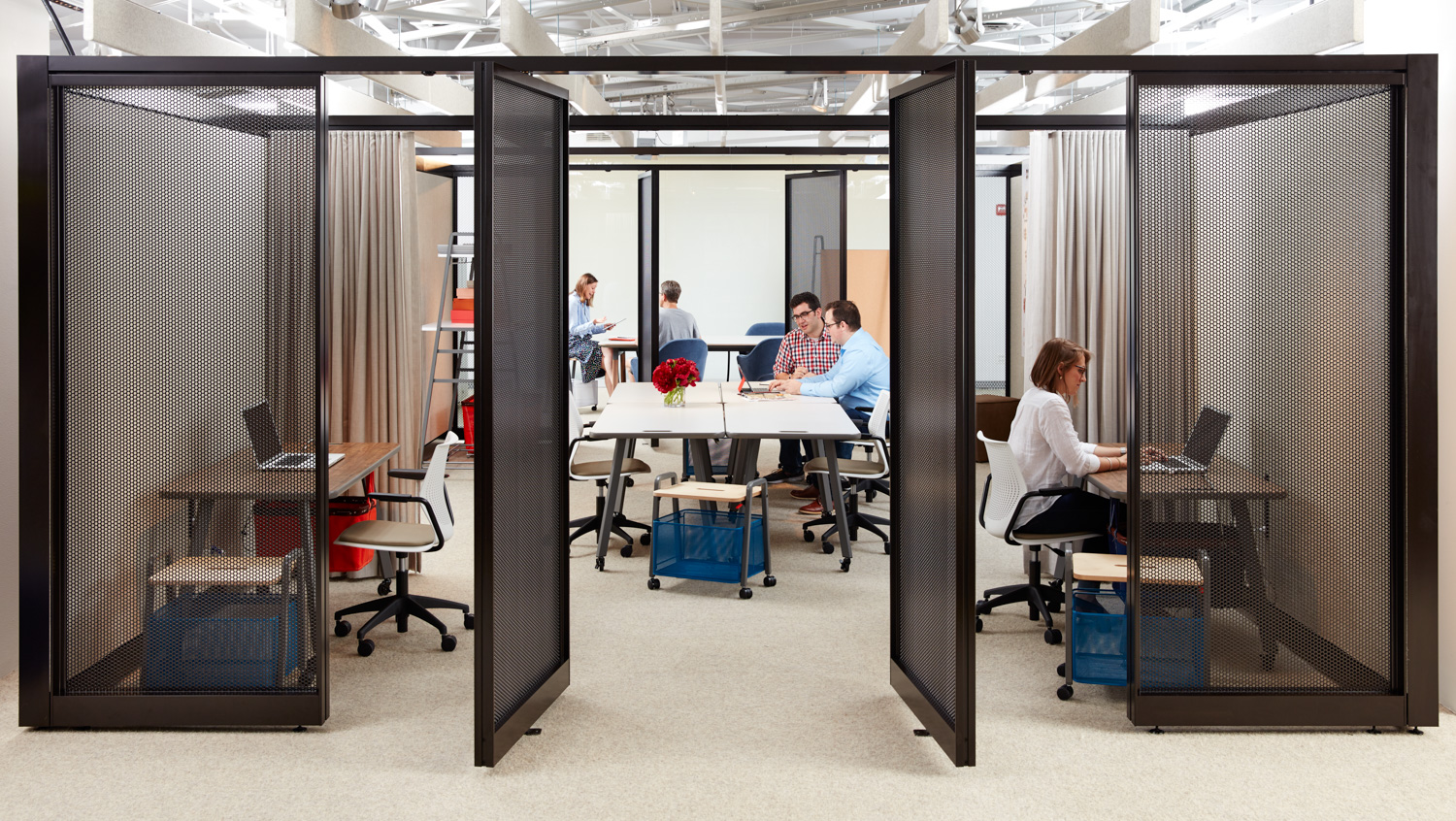
image source: workdesign.com
Immersive Environments pull the best lessons learned from work spaces—including open plan, co-working, ABW, NCE, and MEMO—and tailor them to meet the specific needs of a company.
They are less about what is trending and more focused on desired functions, outcomes, and creating compelling places.
Conclusion
Bob Fox, founder and CEO of FOX Architects has the following wise conclusion:
“The idea that ‘one size fits all’ when it comes to work environments is dead. The workplace design industry is filled with over simplified conversation about open vs. closed plan offices, and the truth is, it’s all irrelevant. It’s born out of a cost reduction mentality that permeates much of corporate America.
Cost is important, but it should not be the driver.
The workplace and all of its accoutrements have to support the leadership goals of the organization first.
Space is in many ways similar to fashion or technology – things go in and out of style all the time. What’s actually important to understand is that each organization is different and has a set of unique requirements needed to achieve maximum performance. And their space should appropriately reflect that.”
Emotional Intelligence 2.0. in business and how it works
Emotional Intelligence 2.0., the book written by Travis Bradberry and Jean Greaves, delivers a step-by-step program for increasing your EQ via four, core EQ skills that enable you to achieve your fullest potential: Self-Awareness, Self-Management, Social Awareness and Relationship Management.
Emotional intelligence is the ability to identify and manage your emotions, as well as the ability to recognize and influence the emotions of others. It’s also defined as the balance between the emotional and rational parts of your brain.
“As a business leader, emotional intelligence can help you keep your emotions in check and identify when your team members are frustrated, burnt out, dissatisfied, or feeling other emotions that could impact their work. And the higher your EI, the more likely you are to be successful in the workplace. In his research, Bradberry found high emotional intelligence among 90 percent of top performers, but only 20 percent of bottom performers.While the process for measuring a person’s IQ is relatively straightforward, developing an accurate assessment of someone’s emotional quotient (EQ) is a bit trickier and generally requires an honest self-evaluation,” wrote inc.com.
Moreover, accordingly Travis Bradberry, to emotional intelligence is the “something” in each of us that is a bit intangible. It affects how we manage behavior, navigate social complexities, and make personal decisions that achieve positive results. Emotional intelligence is made up of four core skills that pair up under two primary competencies: personal competence and social competence.
Emotional intelligence taps into a fundamental element of human behavior that is distinct from your intellect. There is no known connection between IQ and emotional intelligence; you simply can’t predict emotional intelligence based on how smart someone is. Intelligence is your ability to learn, and it’s the same at age 15 as it is at age 50. Emotional intelligence, on the other hand, is a flexible set of skills that can be acquired and improved with practice. Although some people are naturally more emotionally intelligent than others, you can develop high emotional intelligence even if you aren’t born with it.
“It’s a powerful way to focus your energy in one direction with a tremendous result. TalentSmart tested emotional intelligence alongside 33 other important workplace skills, and found that emotional intelligence is the strongest predictor of performance, explaining a full 58% of success in all types of jobs. Your emotional intelligence is the foundation for a host of critical skills—it impacts most everything you do and say each day. (….) Naturally, people with a high degree of emotional intelligence make more money—an average of $29,000 more per year than people with a low degree of emotional intelligence. The link between emotional intelligence and earnings is so direct that every point increase in emotional intelligence adds $1,300 to an annual salary. These findings hold true for people in all industries, at all levels, in every region of the world,” added Bradberry in his LinkedIn post.
5 domains that will be revolutionised by VR – part I
The virtual reality is here and ready to help not only entertain, but educate and influence profoundly our lives, for the better. Here are 5 domains that already see a big influence and that will see even more in the future.
- The real estate industry
Virtual reality can be a great asset when it comes to the real estate. From buying a house, 360 views and being a help for the real estate officers, VR can come in handy and prove to be really helpful. When it comes to open houses, a majority of the real estate domain is moving, well, to domains. The entire estate agent process can be performed online on sites like eMoov and CastleSmart, with virtual reality added in, buying a house is about to become a whole lot more lazy.
When a client is interested in buying a specific property the estate agent will usually arrange a viewing of said property or, in more lavish cases, host an open house. These events allow the potential buyers to walk through the home and examine the property. Now, imagine the prospective shopper was able to view the property from the comfort of their own home. Likely it would result in a greater interest for that residence which would create a faster sale. With VR this is very possible. Clients could put on their headsets and could be electronically strolling through the property within seconds. This means a lot of time and resources that are speared.
Moreover, the virtual reality can help so that the entire inspection could take place from the workplace of the agent. Several images and videos of the property would need to be taken to ready the virtual home for inspect. The same procedure would need to take place if a valuation was to be made via VR.
Also, most trainee estate agents learn the ropes by shadowing one of their senior colleagues on the job, following them around on viewings, visits and valuations, etc. Virtual training methods could be created which pits the user in situations that they would face on the job, such as getting questions from potential buyers, explaining features in a property. This could save real estate firms thousands in training expenses.
2. Education
According to the Smithsonian Mag, the students in classrooms across the United States and parts of Europe will soon be able to go on field trips to Buckingham Palace, Machu Picchu and the Great Barrier Reef, but they’ll be doing it through virtual reality. Google recently announced that it is expanding its Expeditions Pioneer Program, which brings virtual reality field trips to classrooms using Google’s cheap, smart phone-based VR viewer, Cardboard. The goal is to expose students to places they wouldn’t be able to see otherwise.
The idea for Expeditions came from a hackathon in Google’s education department. Given 36 hours to create a tool that would boost student engagement, Jen Holland, then a product manager at Google Apps for Education, drew on existing Google assets—the recently launched Cardboard, some teaching apps in development and a huge archive of 3D maps and photographs. She combined the three to make interactive virtual reality lessons, which she calls “experiences.”
Students can use Cardboard—an inexpensive pair of VR goggles made from a cardboard cutout, magnets, an Android phone and an app—to move through an experience that their teacher controls from a tablet. The Expeditions program has distributed the equipment to classrooms and worked with teachers to figure out lesson plans, but now, Holland says, they’re opening it up, so any teacher with a tablet and access to VR viewers (Cardboard costs about $20) can use it. With lessons loaded on the tablets, teachers and students don’t need to have internet access, which is important for low-resource classrooms.
Once students put on the VR headsets, they’re immersed in a 3D version of Machu Picchu or the Smithsonian’s National Museum of Natural History. They can look around, and the teacher can share information about things they’re seeing. Google built a Great Wall of China experience for a fifth grade math class, to give the students a more tactile lesson about multiplication. The same experience has been the topic of conversation in a 10th grade Chinese language class, and it provided physical context for students in a 12th grade history class and an anthropology lecture at a Brazilian university.
More you can read here.
How To Avoid The Professional Burnout
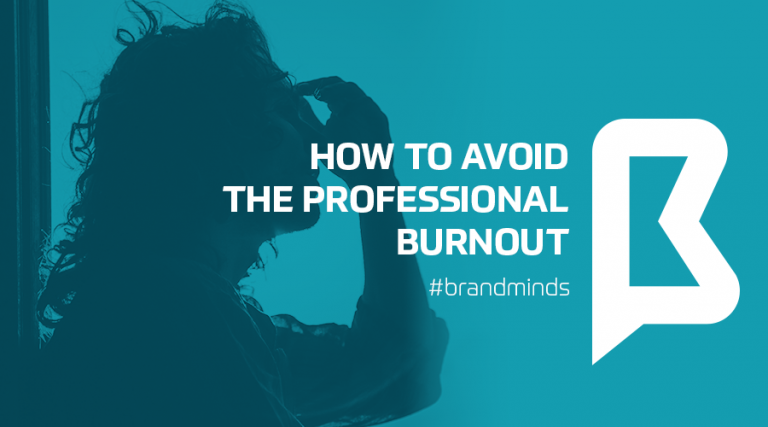
When one is passionate about their job, when one is a high-achiever, one tends to ignore the fact that they’re working exceptionally long hours, taking on exceedingly heavy workloads and putting enormous pressure on themselves to excel—all of which make them ripe for burnout.
According to psychologytoday.com, burnout is a state of chronic stress that leads to: physical and emotional exhaustion, cynicism and detachment, feelings of ineffectiveness and lack of accomplishment. In the state of full-fledged burnout, one is no longer able to function effectively on a personal or professional level. However, burnout doesn’t happen overnight, our bodies and minds do give us warnings, and if you know what to look for, you can recognize it before it’s too late. More about the stages of a burnout and its signs one can read here.

But what can we do to avoid reaching this state? According to Christina Maslach and Michael P. Leiter in their book “The Truth About Burnout: How Organizations Cause Personal Stress and What to Do About It”, when burnout occurs, three things happen: you become chronically exhausted, cynical and detached from your work and you feel increasingly ineffective on the job.
An idea would be to try and be more optimistic and make sure you don’t fall on a pessimistic slide, or, if you have the necessary means, just try a vacation. Realistically speaking though, things are not as easy as they seem, hence the problem creeping out on you and making it quite a big issue.
Pay attention to the voice in your head. When it starts describing negative events as permanent, pervasive or personal, correct yourself. By remembering the 3 P’s (permanence, pervasiveness and personal) and flipping the script, Martin Seligman, author of “Learned Optimism: How to Change Your Mind and Your Life” says you can make yourself more optimistic over time.
Increase your social activity. Spend time with friends, they will bring a balance into your life. As shown by bakadesuyo.com, when the American Medical Association surveyed top doctors to find out how they avoided burnout, one of the key things mentioned was “sharing issues with family and friends.”
Increase your self-efficiency. Paula Davis-Laack, JD, MAPP, an internationally-published writer who travels the globe as a stress and resilience expert, wrote for Psychology Today that self-efficacy is having the belief in your own ability to accomplish (and exercise control over) personally meaningful goals and tasks. People who have a stronger level of perceived self-efficacy experience less stress in challenging situations, and situations in turn become less stressful when people believe they can cope (Albert Bandura, 1989).
Have creative outlets. Burnout interferes with your ability to perform well, increases rigid thinking, and decreases your ability to think accurately, flexibly, and creatively. Even if you aren’t able to flex your creative muscles at work, having some type of creative outlet will keep you engaged and motivated.
Take care of yourself. Make sure you always put yourself first and don’t forget what is important to you and your life. Moreover, pay attention to your health and the outside-work life. Our bodies aren’t machines and one has to remember that things will still be here to be done after taking a much-needed break.
Start saying “no” from time to time. Don’t be afraid to say no. Every “yes” you say adds another thing on your plate and takes more energy away from you.
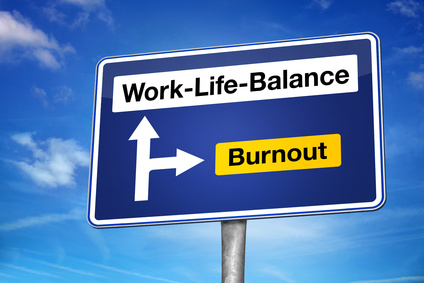
Get support where you can find it. The number of people who say they have no one with whom they can discuss important matters has nearly tripled in the past two and a half decades. The more depressed or into-work people get, the more they tend not to speak with other people or spend time with others, considering they are always under-time pressure or with a deadline hanging over their head. It’s a state one must make sure he / she doesn’t get stuck into.
According to http://99u.com, to help relieve pressure, schedule daily blocks of downtime to refuel your brain and well-being. It can be anything from meditation to a nap, a walk, or simply turning off the wifi for a while.
Concentrate on positive emotions. Studies show that increasing your diet of positive emotion builds your resilience, creativity and ability to be solution-focused, things that are in short supply if you feel like you’re burning out. I made it a point to start noticing when people did things well (and told them so), and I tried to stop being so hard on myself. Aim for a ratio of positive emotions to negative emotions of at least 3:1, which is the tipping point to start experiencing increased resilience and happiness (Fredrickson, 2009).
Limit your contact with negative people. Hanging out with negative-minded people who do nothing but complain will only drag down your mood and outlook. If you have to work with a negative person, try to limit the amount of time you have to spend together.
Make friends at work. Having strong ties in the workplace can help reduce monotony and counter the effects of burnout. Having friends to chat and joke with during the day can help relieve stress from an unfulfilling or demanding job, improve your job performance, or simply get you through a rough day.
Take time off. If burnout seems inevitable, try to take a complete break from work. Go on vacation, use up your sick days, ask for a temporary leave-of-absence—anything to remove yourself from the situation. Use the time away to recharge your batteries and pursue other burnout recovery steps. Entrepreneurs or freelancers can be especially prone to burnout. Joel Runyon plays “workstation popcorn,” in which he groups tasks by location and then switches, in order to keep work manageable, provide himself frequent breaks, and spend his time efficiently.

Set boundaries. Don’t overextend yourself. Learn how to say “no” to requests on your time. If you find this difficult, remind yourself that saying “no” allows you to say “yes” to the things that you truly want to do.
Nourish your creative side. Creativity is a powerful antidote to burnout. Try something new, start a fun project, or resume a favorite hobby. Choose activities that have nothing to do with work.
Set aside relaxation time. Relaxation techniques such as yoga, meditation, and deep breathing activate the body’s relaxation response, a state of restfulness that is the opposite of the stress response.
Get plenty of sleep. Feeling tired can exacerbate burnout by causing you to think irrationally.
Avoid nicotine. Smoking when you’re feeling stressed may seem calming, but nicotine is a powerful stimulant, leading to higher, not lower, levels of anxiety.




